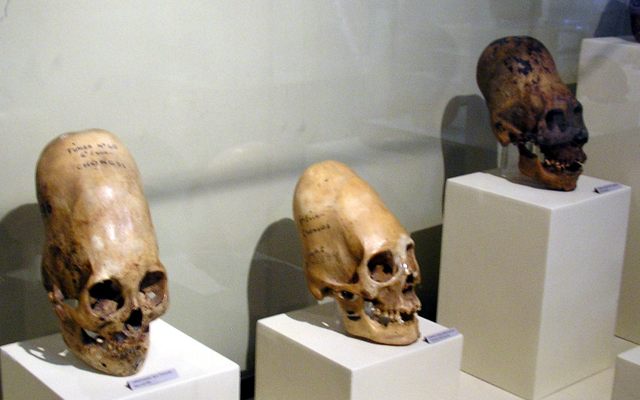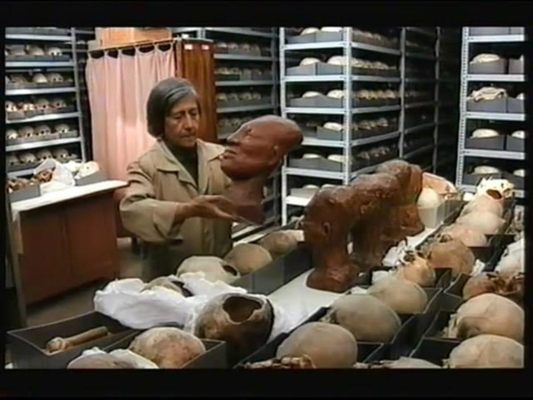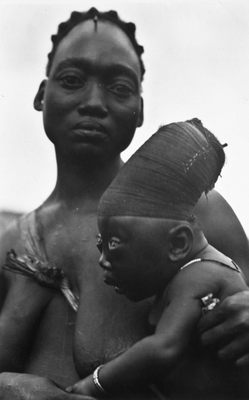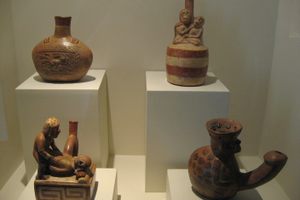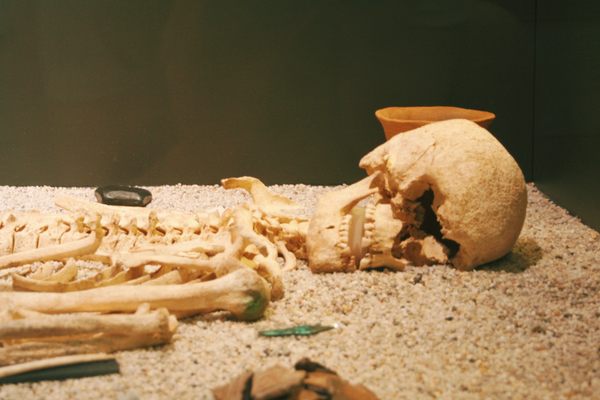About
Indigenous people have lived in Peru since as early as 12,000 B.C., leaving Peruvian archaeologists with thousands of years of prehistoric human skulls to examine. The Museum of Anthropology, Archaeology, and History in Lima, Peru, contains over 10,000 of these skulls, packed together tightly in the museum’s Human Remains Gallery.
The room is filled with so many skulls that it has been speculated to be the largest ancient skull collection in the world. The collection also includes hundreds of ancient ceramics and stone statues.
Perhaps the most interesting of the museum’s 10,000 skulls is the Paracas collection, known worldwide for their stretched, elongated shape. These strange skulls have foreheads that are massively taller than those of normal humans, which many archaeologists suspect is the result of rigidly tying cloth or two pieces of wood around the head to show elite status in society.
The debate over whether the skulls' elongated shapes stem from cultural, genetic, or perhaps alien origin makes the Paracas collection one of the museum’s main draws and its most highly disputed exhibit.
Related Tags
Know Before You Go
The room of 10,000 ancient skulls is off limits to the public, and you'll have to settle for the 8 skulls they have on exhibit. However, the skulls they do have on exhibit, while few they may be, are a fascinating sight to behold.
The entire Anthropology wing of the museum is closed for repairs to the floor and roof. Estimated time of reopening is 3 to 4 years.
Peru: Machu Picchu & the Last Incan Bridges
Discover Inca Wonders.
Book NowCommunity Contributors
Added By
Published
January 3, 2017
Sources
- https://hiddenincatours.com/the-room-of-10000-ancient-skulls-in-lima-peru/
- http://www.limaeasy.com/culture-guide/museums-lima/national-museum-archaeology-anthropology-and-history
- https://en.wikipedia.org/wiki/Indigenous_peoples_in_Peru#Origins
- http://www.ancient-origins.net/news-history-archaeology/breaking-new-dna-testing-2000-year-old-elongated-paracas-skulls-changes-020914

